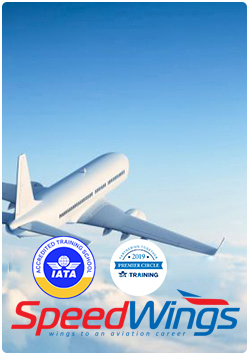
IAAI seeks clarity from aviation bodies
- By TBM Staff | Mumbai --
- June 10, 2020 --
- 0 Comments
At a time when the aviation industry has started limping back to normalcy with the resumption of domestic flights, experts point out to the urgent need of clear policy directives on the carriage of dangerous goods to ensure compliance and safety of aircraft with the Indian government allowing passengers to carry 350 ml of alcohol-based hand sanitizers on-board due to ambiguity in defining its chemical composition.
According to Biji Eapen, President, IAAI, there are serious security risks in allowing each passenger to carry alcohol-based hand sanitizers without any regulated guidelines on the chemical composition and characteristic properties. In the Indian scenario, several manufacturers and vendors in India are selling hand sanitizers containing ethanol or isopropyl alcohol with 60-95% in volume due to the lack of appropriate regulatory control by government authorities. The flashpoint of a flammable liquid may be altered by the presence of an impurity, wherein, chemical combination and percentage of volume determine the vulnerability of the product. And chemical engineers said that the frequent use of sanitizers inside the flight will increase the vapour concentration of inflammable alcohol posing a high risk, Eapen said.
Raising a red flag on the lapses in the Dangerous Goods Regulations guidelines, Eapen has approached the Indian aviation regulator, Directorate General of Civil Aviation, Ministry of Civil Aviation as well the international aviation body of IATA (International Air Transport Association) Safety & Standards. He is waiting to hear from them.
Talking about this, Eapen said, “This is a technical issue and requires clarity so that every stakeholder in the aviation business from aircraft manufacturers to airlines to cabin crew and ground staff is aware, and trained well. Alcohol-based hand sanitizers contain ethanol or isopropyl alcohol which are flammable liquids and can be easily ignited in the air at ambient temperatures. Currently, there is no medical body to regulate the percentage of the components used in hand sanitizers, and the permissible limit of the liquid to be carried on an aircraft to assure the safety of passengers as well as the aircraft. What is required it complete clarity to manufacturers of hand sanitizers, and necessary directions on the volume of components to be used for carrying the liquid on an aircraft.”
Initially, the ICAO and IATA allowed passengers and airline crew to carry alcohol-based liquid sanitizer up to 100 ml in carry-on baggage or in person under the provisions “Medicinal or Toiletry Articles”. On May 13, India’s Bureau of Civil Aviation Security, through an addendum allowed passengers to carry alcohol-based liquid hand sanitizers up to 350 ml in their carry-on baggage or person, for travel from and within India. “However, these eligibility or additional allowances available to the passengers are neither mentioned by the Ministry of Civil Aviation in its Guidelines/SOPs nor publicised in the media.”
Further, IATA and ICAO have permitted airlines to carry alcohol-based liquid/gel hand sanitizers as a part of aircraft property for use in galleys and toilets, with the approval of the Regulator. WHO has classified Coronavirus (COVID-19) under Class 6.2 Infectious Substances and transportation of specimens or cultures in Category A or B for diagnose, treatment, preventive, or research purposes for vaccines.
As per ICAO, IATA and DGCA regulatory protocols, all airport, airline, and ground handling staff should be properly updated and trained with the new changes in DGR regulations according to their job responsibility. Since classroom training not possible, IAAI with its training partner Speedwings Aviation Academy is providing a DGR based FREE e-learning program “Guidance for Ground Handling during Covid-19 ” to all airlines, airport and ground handling staff enable them to overcome the challenges due to Coronavirus Covid-19 pandemic.
VISIT LINK : IAAI seeks clarity from aviation bodies on carrying alcohol-based hand sanitizers on board







LEAVE A COMMENT
You must be logged in to post a comment.